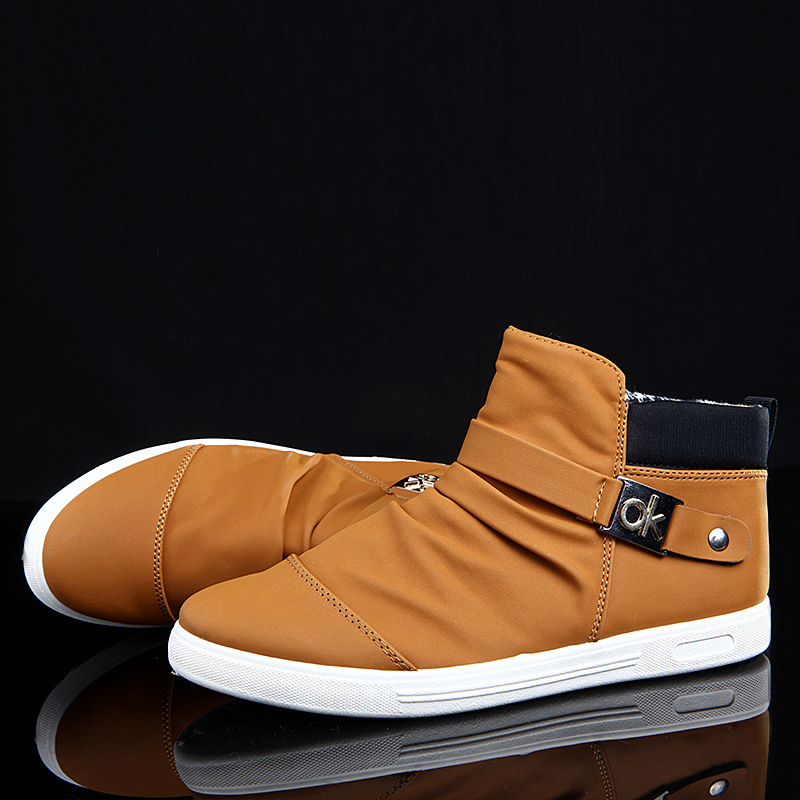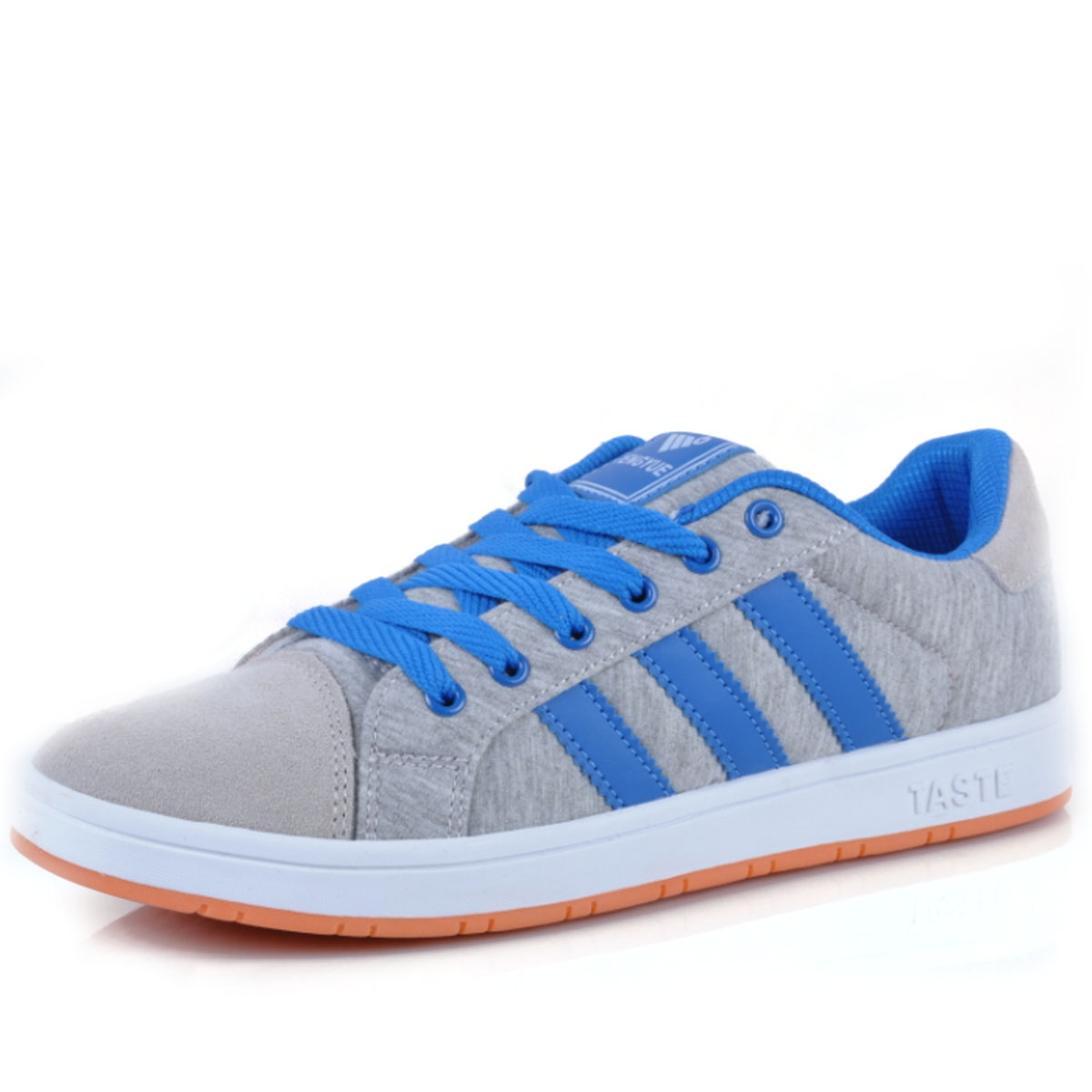Mens Fashion Sneakers Biography
Source:- Google.com.pkShoemaking became more commercialized in the mid-18th century, as it expanded as a cottage industry. Large warehouses began to stock footwear in warehouses, made by many small manufacturers from the area.
Until the 19th century, shoemaking was a traditional handicraft, but by the century's end, the process had been almost completely mechanized, with production occurring in large factories. Despite the obvious economic gains of mass-production, the factory system produced shoes without the individual differentiation that the traditional shoemaker was able to provide.
The first steps towards mechanisation were taken during the Napoleonic Wars by the engineer, Marc Brunel. He developed machinery for the mass-production of boots for the soldiers of the British Army. In 1812 he devised a scheme for making nailed-boot-making machinery that automatically fastened soles to uppers by means of metallic pins or nails.With the support of the Duke of York, the shoes were manufactured, and, due to their strength, cheapness, and durability, were introduced for the use of the army. In the same year, the use of screws and staples was patented by Richard Woodman. Brunel's system was described by Sir Richard Phillips as a visitor to his factory in Battersea as follows:
"In another building I was shown his manufactory of shoes, which, like the other, is full of ingenuity, and, in regard to subdivision of labour, brings this fabric on a level with the oft-admired manufactory of pins. Every step in it is effected by the most elegant and precise machinery; while, as each operation is performed by one hand, so each shoe passes through twenty-five hands, who complete from the hide, as supplied by the currier, a hundred pairs of strong and well-finished shoes per day. All the details are performed by the ingenious application of the mechanic powers; and all the parts are characterised by precision, uniformity, and accuracy. As each man performs but one step in the process, which implies no knowledge of what is done by those who go before or follow him, so the persons employed are not shoemakers, but wounded soldiers, who are able to learn their respective duties in a few hours. The contract at which these shoes are delivered to Government is 6s. 6d. per pair, being at least 2s. less than what was paid previously for an unequal and cobbled article."
However, when the war ended in 1815, manual labour became much cheaper, and the demand for military equipment subsided. As a consequence, Brunel's system was no longer profitable and it soon ceased business.
Similar exigencies at the time of the Crimean War stimulated a renewed interest in methods of mechanization and mass-production, which proved longer lasting. A shoemaker in Leicester, Tomas Crick, patented the design for a riveting machine in 1853. His machine used an iron plate to push iron rivets into the sole. The process greatly increased the speed and efficiency of production. He also introduced the use of steam-powered rolling-machines for hardening leather and cutting-machines, in the mid-1850s
The sewing machine was introduced in 1846, and provided an alternative method for the mechanization of shoemaking. By the late 1850s, the industry was beginning to shift towards the modern factory, mainly in the US and areas of England. A shoe stitching machine was invented by the American Lyman Blake in 1856 and perfected by 1864. Entering in to partnership with McKay, his device became known as the McKay stitching machine and was quickly adopted by manufacturers throughout New England.[25] As bottlenecks opened up in the production line due to these innovations, more and more of the manufacturing stages, such as pegging and finishing, became automated. By the 1890s, the process of mechanisation was largely complete.
Since the mid-20th Century, advances in rubber, plastics, synthetic cloth, and industrial adhesives have allowed manufacturers to create shoes that stray considerably from traditional crafting techniques. Leather, which had been the primary material in earlier styles, has remained standard in expensive dress shoes, but athletic shoes often have little or no real leather. Soles, which were once laboriously hand-stitched on, are now more often machine stitched or simply glued on. Many of these newer materials, such as rubber and plastics, have made shoes less biodegradable. It is estimated that most mass-produced shoes require 1000 years to degrade in a landfill.[26] In the late 2000s, some shoemakers picked up on the issue and began to produce shoes made entirely from degradable materials, such as the Nike Considered.
In 2007, the global shoe industry had an overall market of $107.4 billion, in terms of revenue, and is expected to grow to $122.9 billion by the end of 2012. Shoe manufacturers in the People's Republic of China account for 63% of production, 40.5% of global exports and 55% of industry revenue. However, many manufacturers in Europe dominate the higher-priced, higher value-added end of the market.
As an integral part of human culture and civilization, shoes have found their way into our culture, folklore, and art. A popular 18th century nursery rhyme is There was an Old Woman Who Lived in a Shoe. This story tells about an old woman living in a shoe with a lot of children. In 1948, Mahlon Haines, a shoe salesman in Hallam, Pennsylvania, built an actual house shaped like a work boot as a form of advertisement. The Haines Shoe House was rented to newlyweds and the elderly until his death in 1962. Since then, it has served as an ice cream parlor, a bed and breakfast, and a museum. It still stands today and is a popular roadside attraction.
Mens Fashion Sneakers Mens Fashion 2014 Boots Suits Winter Magazine Tumblr Shoes Shirts Photos Pics
Mens Fashion Sneakers Mens Fashion 2014 Boots Suits Winter Magazine Tumblr Shoes Shirts Photos Pics
Mens Fashion Sneakers Mens Fashion 2014 Boots Suits Winter Magazine Tumblr Shoes Shirts Photos Pics
Mens Fashion Sneakers Mens Fashion 2014 Boots Suits Winter Magazine Tumblr Shoes Shirts Photos Pics
Mens Fashion Sneakers Mens Fashion 2014 Boots Suits Winter Magazine Tumblr Shoes Shirts Photos Pics
Mens Fashion Sneakers Mens Fashion 2014 Boots Suits Winter Magazine Tumblr Shoes Shirts Photos Pics
Mens Fashion Sneakers Mens Fashion 2014 Boots Suits Winter Magazine Tumblr Shoes Shirts Photos Pics
Mens Fashion Sneakers Mens Fashion 2014 Boots Suits Winter Magazine Tumblr Shoes Shirts Photos Pics
Mens Fashion Sneakers Mens Fashion 2014 Boots Suits Winter Magazine Tumblr Shoes Shirts Photos Pics
Mens Fashion Sneakers Mens Fashion 2014 Boots Suits Winter Magazine Tumblr Shoes Shirts Photos Pics
Mens Fashion Sneakers Mens Fashion 2014 Boots Suits Winter Magazine Tumblr Shoes Shirts Photos Pics










No comments:
Post a Comment